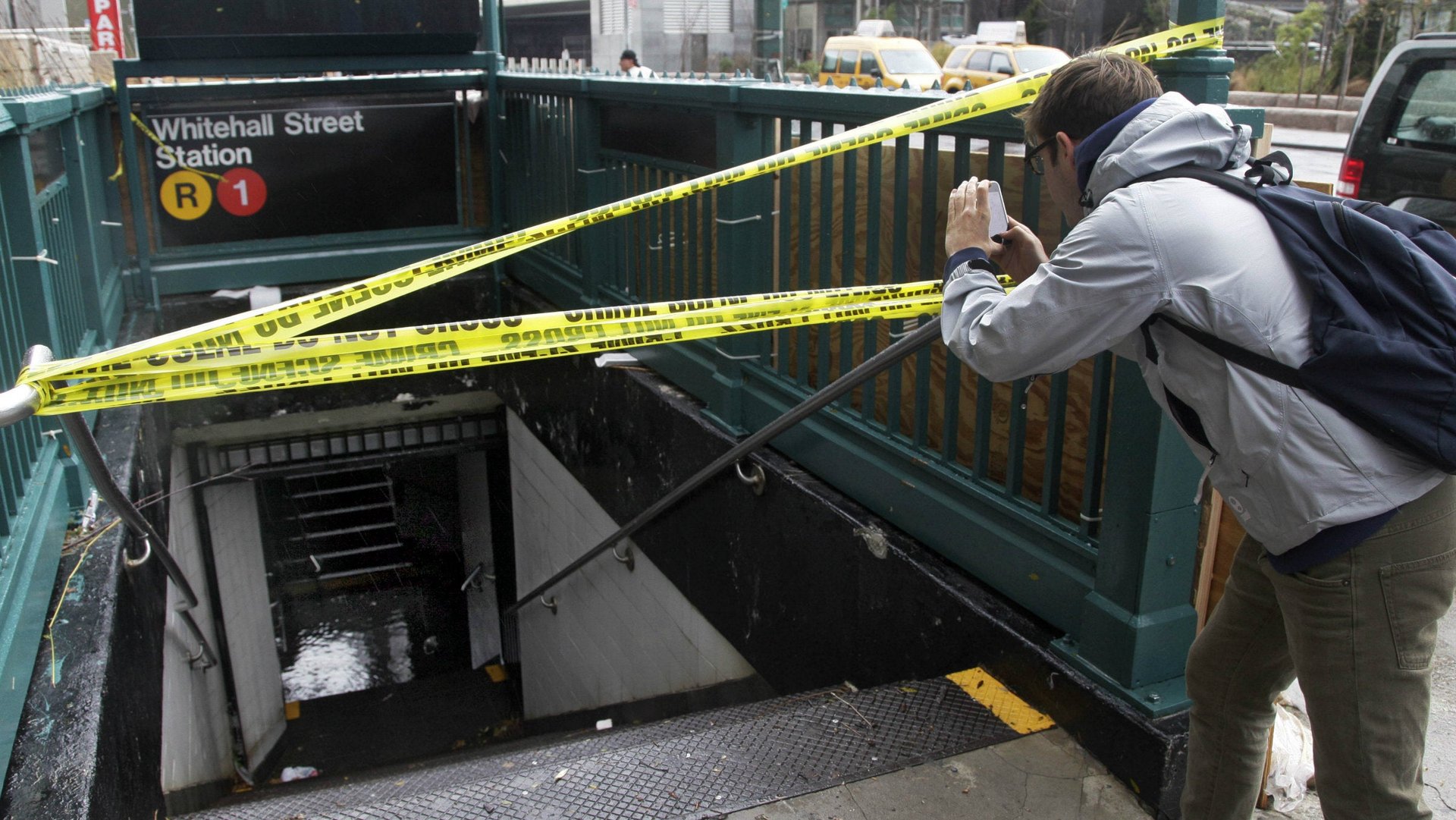New York City’s subways could take between 21 days and several months to be restored, says study
Note: Since this piece was written, Mayor Michael Bloomberg has said in a press conference today that subway service would be out for another four to five days. An MTA official told the Wall Street Journal: “It could be a long time.” —Quartz


Note: Since this piece was written, Mayor Michael Bloomberg has said in a press conference today that subway service would be out for another four to five days. An MTA official told the Wall Street Journal: “It could be a long time.” —Quartz
Last fall, as part of a massive report on climate change in New York, a research team led by Klaus Jacob of Columbia University drafted a case study that estimated the effects of a 100-year storm on the city’s transportation infrastructure. Considering MTA Chairman Joseph Lhota’s comments today that Hurricane Sandy’s impact on the subway was “worse than the worst case scenario,” it seems pretty safe to put Sandy in the 100-year category. In that case, assuming the rest of the report holds true, the subway system could be looking at a recovery time of several weeks, with residual effects lasting for months and years.
The researchers modeled a potential 100-year storm that consisted of either a category 1 or 2 hurricane hitting nearby, or a severe nor’easter that coincided with high tide. (As we know now, Sandy was a hybrid of all three events.) The models predicted complete flooding of several tunnels after such an event, including all the tunnels in the East River:
Based on their models, Jacob and colleagues wrote that a 100-year storm could leave roughly 1 billion gallons of water to be pumped from the city’s network of subway tunnels. (To give you an idea of scale, that’s equal to the average daily consumption of drinking water in the city.) If all 14 tunnels flooded, it would take about five days to pump each one clear, according to the report. However that’s the best-case scenario; a week per tunnel is more likely.
Immediate flood-clearing isn’t the only concern. As Ted Mann writes for the Wall Street Journal, salt water is likely to have considerable residual effects on the aging subway system. Jacob and colleagues write that equipment damaged by brackish water will at least require time to clean and could also require time for replacement. In some cases, when the parts are too old and no longer in production, it could require completely new infrastructure:
There probably are not enough personnel trained to rebuild and refurbish equipment simultaneously in multiple subway lines even if the equipment could be procured. There is some existing equipment that, if damaged, cannot be replaced because it is obsolete and is no longer manufactured, nor are there replacement parts for it. Such equipment would have to be redesigned and then installed — a process that can take a long time.
Just how long is the 100-year question. The researchers estimate that, after a storm of this magnitude, it could take the subway system about 21 days to get working at 90 percent functionality. If all potential damage is considered, Jacob and colleagues warn that timeline could increase to several months, and that “permanent restoration of the system to the full revenue service that was previously available could take more than two years.”
To be sure, these are just predictions. The transit authority made as many mitigating, preparatory measures as it could to limit the extent of the damage. Then again, Sandy may well have been worse than a 100-year storm.